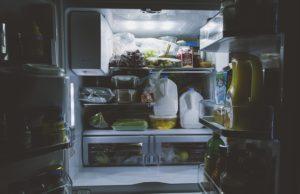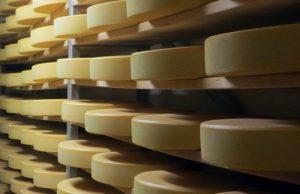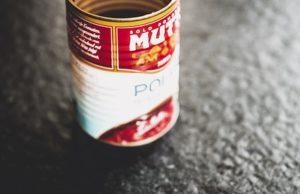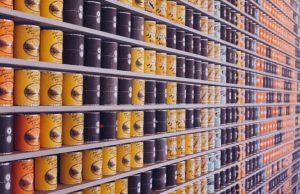Food and water reserves are the essentials for preppers. Without them you are going to be in real trouble whether you are in a flood, cyclone, financial collapse or worst case scenario. That’s part of the plan. If you’re a prepper, you are going to have enough resources for yourself and your family or friends to survive.
A lot of people ask, why do you need to store food? Easy, it’s what you need to survive. Food and water are the essentials to any good stock for a prepper. Yes there’s tonnes of other things you can add but when it boils down to it that’s all you need. And since prepping has been in existence a lot of people have benefited from having surplus supplies of food and water, esepcially in natural disasters.
If a flood is about to happen in your area, take a look at your nearest supermarket and you will see the people who haven’t prepped. If you can even
Preppers don’t need to rush down to the shops to stock up for rainy days ahead. All they have to do is sit back, put their feet up and bunker down with a good book because they’re ready. If you’re not ready with your stock, the time to start is now. Following the basics of prepping when it comes to storing food is very simple, take these seven steps and you will be done in no time.
List what you already use
The hardest part to storing food is thinking about what you need. The first step is to look at what you and your family consumes. Make a list of your diet for a week and find the things that you eat regularly such as rice, oats, beans, fruits or whatever else you might consume.
Find the longest lasting foods on that list
Start to eliminate things off your list that have a low shelf life. When we are prepping we’re trying to store food that lasts a long time. It would be pointless to buy things that expire after a month that you have to keep replacing. Our aim is to be financially efficient as well as efficient with our survival skills. This should go without saying.
To think about what you’re going to buy, look at what you currently use and make a list of it. Take a look at the expiration dates and cross off anything that has a shelf life of under six months. Ideally we want our food stocks to last and to be edible when we need them.
List your foods from the longest lasting to the least
Let’s hack our prepper’s shopping list a little bit and identify what the most important items are that we need. The priority is long-lasting items so let’s keep those at the top.

Some additional foods that you might not have in your cupboard that are incredibly long-lasting are:
- Dried beans (30 years)
- Rolled oats (30 years)
- Pasta products (30 years)
- Honey (too long 100 years+)
- Salt/Sugar (indefinite)
- Legumes: lentils and peas (4-5 years)
- White rice (if properly stored: 20 years)
- Dehydrated fruit slices (30 years)
- Dehydrated carrots (20 years)
- Dried corn (10+years)
- Baking soda (indefinitely)
- Instant coffee, cocoa powder, tea (10+ years)
- Powdered milk (20+ years. Should use a moisture absorber in their storage packs)
- Stock/bouillon (10+years)
- Raisins (1 year: short, but they’re nice with the powdered milk and oats)
- Powdered milk (lasts for a year or more, especially if it is dehydrated powdered milk)
- Hard cheese in wax (25+years)
- OvaEasy Powdered whole eggs (hard to believe it exists – these last for up to 2 years)
- Canned bake beans and canned spaghetti (3 years – I love these personally, also really good for bug-out bags when you can get them in the baby size)
- Tomato-based pasta sauce (1 year)
You may notice we are only looking at cupboard contents here and not refrigerated or frozen items. This is because we want to ensure this food will last despite power outages. Of course, if you have a generator then you’ve got power for a fridge and freezer, but that is going to run resources dry very quickly.
For meats, I would suggest shopping around in the canned food section. I personally have found there are a lot of versions of beef mince, sausages, spam, chicken and other meat products that have one to two-year shelf lives, so it pays to research.
As for vegetables, this was an primary food for me as a lot of my intake is healthy vegetable-based. For myself, I use a stock of Backpacker’s Pantry items which you can order online through their Amazon store and they are not too expensive. I have only just started using these after being introduced to them by a few mountain climbers. They are an MRE provider with a very strong organic focus and provide a lot of vegetarian meals, as well as meats and delicious deserts. They have a selection of spinach pouches and vegetable parmesan which are both great additions to the stock.
If you have kids, these guys do freeze-dried ice cream with a shelf life of more than three years. Oh and they do a cheesecake with the same shelf-life. If I was trapped in a fallout shelter I’d be taking packs from these guys with me.
Find a suitable place to store your reserves
When it comes to where to keep your supplies you should have a dark room that has the least exposure to light and the least warmth.
Depending on how much you are planning to stock you may want to look at shelving units. These can be very cheap industrial units or you can make your own just out of old wooden pallets and such. In a given storage unit you want to have at least three shelves.
You should have a system whereby you load new stock on the bottom shelf and eat old stock from the top shelf. This means each time you buy stock you move the older stock up one shelf. It ensures that you are cycling through your stocks efficiently and not letting supplies age.
This is also a good way to keep track of stock that you might need. Again, remember our food lists, we are going to need to keep track of everything we eat and adjust to that diet. If you find you are running out of a certain product quickly, perhaps it might pay in the long run to stock more of that product.
Happy shopping

So now you’ve got your list sorted for your prepping stock, it’s time to go freak out the checkout attendant at the supermarket with your 20 packets of dried corn.
You should be looking through supermarket specials and catalogues before going to buy your stock to see what’s on sale. This could make a huge difference when your purchasing 40 packets of pasta at no discount. If you have a nearby wholesale place it might be an idea to look at getting a subscription just because the nature of your purchases will be in bulk stock.
If you are living near an Aldi, keep an eye out on some of their stocks as they can be ridiculously cheap. A fellow prepper I know recently purchased three month’s worth of stocked items for $150.
Getting your water supply sorted
The standard rate of consumption is two gallons of water per person per day. That means you need to stock a lot of water. Bottles of water have an indefinite shelf life, so that’s no issue. By this standard of consumption if you have eight one-litre water bottles you should be able to fulfil that requirement.
Acquiring water for food stores is not difficult and if you keep an eye out for specials from any stores you should be able to easily find a required amount. The biggest issue that comes with water is finding the right storage method. If you’ve done the calculations, a one month supply for one person is about 240 one-litre bottles. That’s a lot.
A good idea is to look for large water containers or five litre stock bottles sold in supermarkets. These are more efficient on space and work out to be a little bit more cheaper and your plastic waste isn’t so huge either.
Test and adjust
It’s an old military principle I once learned and it applies to a lot of things, test and adjust. When it comes to stocking food this is exactly what needs to be done. What I stock will not be what you stock as we all differ in our food consumption patterns.

Try a trial week for you and your family on your rations. It’s fun because you’re limited to a selection of foods where you can get creative and see what you can make, this will identify to you any other ingredients you need that you didn’t think of in your preparatory list-building. This also gives you an idea of how much food you consume in a resource-fuelled week. Some people eat more than others, that’s just a simple fact of life. From that week you can have a very good idea of how much you and your family or friends need to survive a month.
The last part of this is documentation. Make sure you write down everything you stock and consume. This helps with identifying week points within your reserve supply and is an easy reference for other members of the prepping community and any friends who may be interested. In that process of documentation you should also be writing down fat, sugar, carbohydrate, sodium and protein intakes of each food type. At the end of the month you can see a total consumption chart of your diet. Ideally you would want to be consuming a diet which is built up of 45-65% carbohydrates with a low count of sugars, 10-35% proteins and 20-35% fats. To remember these is simple as most professionals recommend 50, 30, 20, being 50% carbohydrate, 30% fats, 20% proteins.
Sit back and enjoy
You’re stocked up and prepared. That’s it, that is the basics of prepping for a good food and water supply. Now you rest easy knowing that if a disaster or emergency occurs, you don’t need to rush down to the market and scrape the last few bruised apples off the shelf. Instead you just go to your storage room and peruse the shelves for a nice dinner for you, your family or your friends.
Heck, you can enjoy a nice pack of three-year-stored cheesecake with a side of ice-cream and wait out the weather. Who said prepping couldn’t be fun, easy and good for your family?



I have a lot; been storing since 2009. I just took the 1 lb. hams and spam and halved them, wrapped them, put in ziploks and froze them…since they were several years old and I have good food to eat I just felt better with them frozen..and when I need one, I only open a half. I’m alone now, so it’s better.
Good day